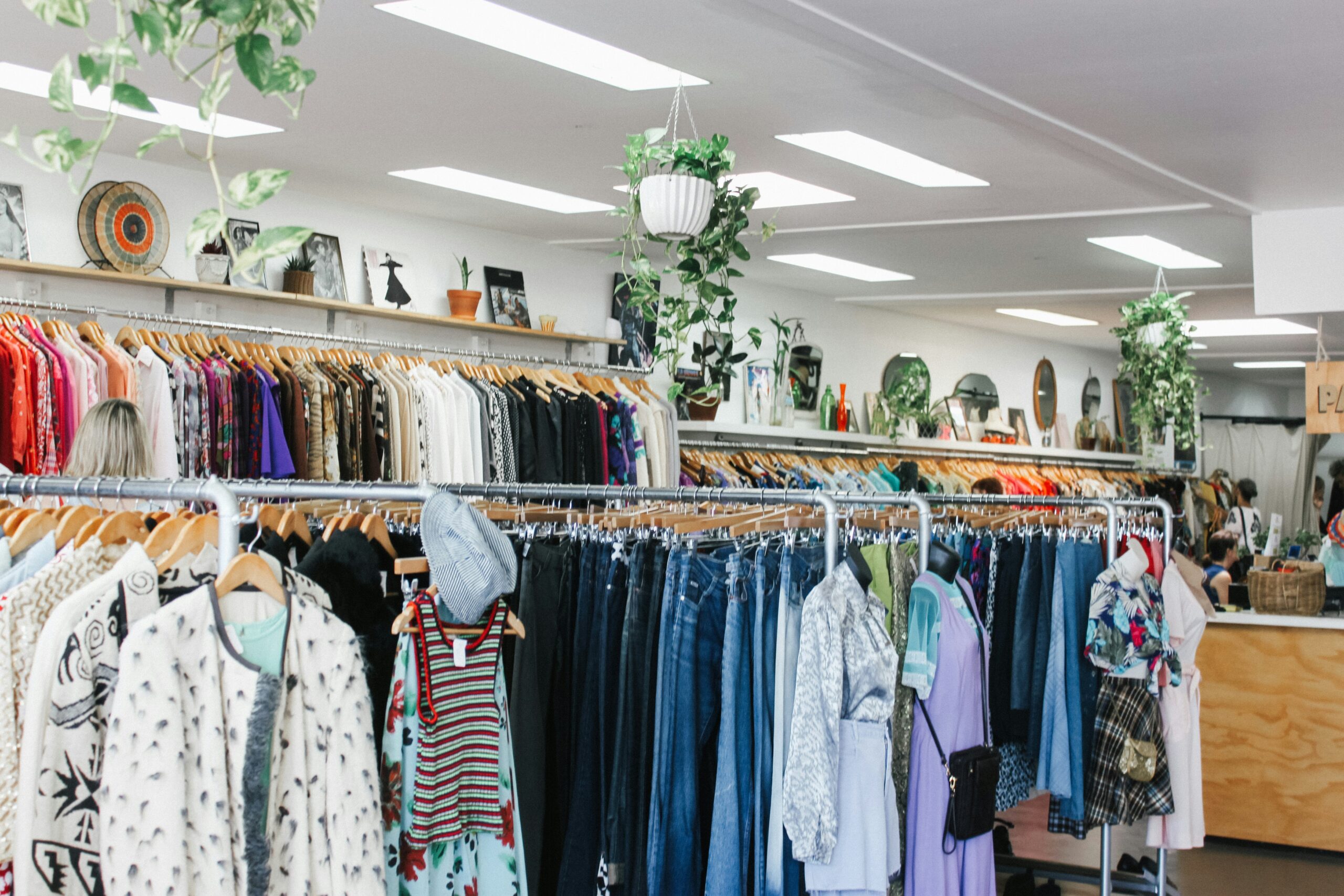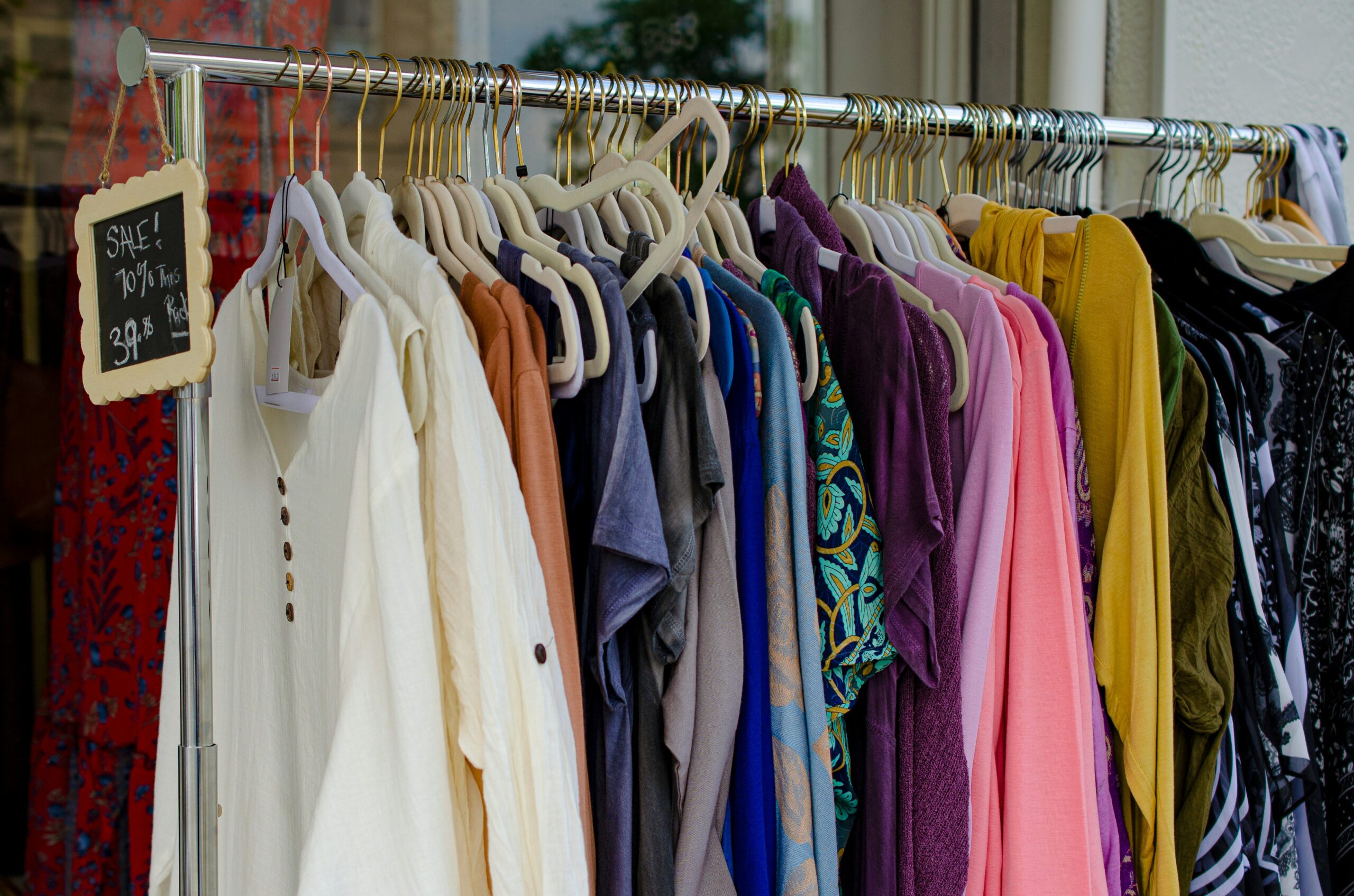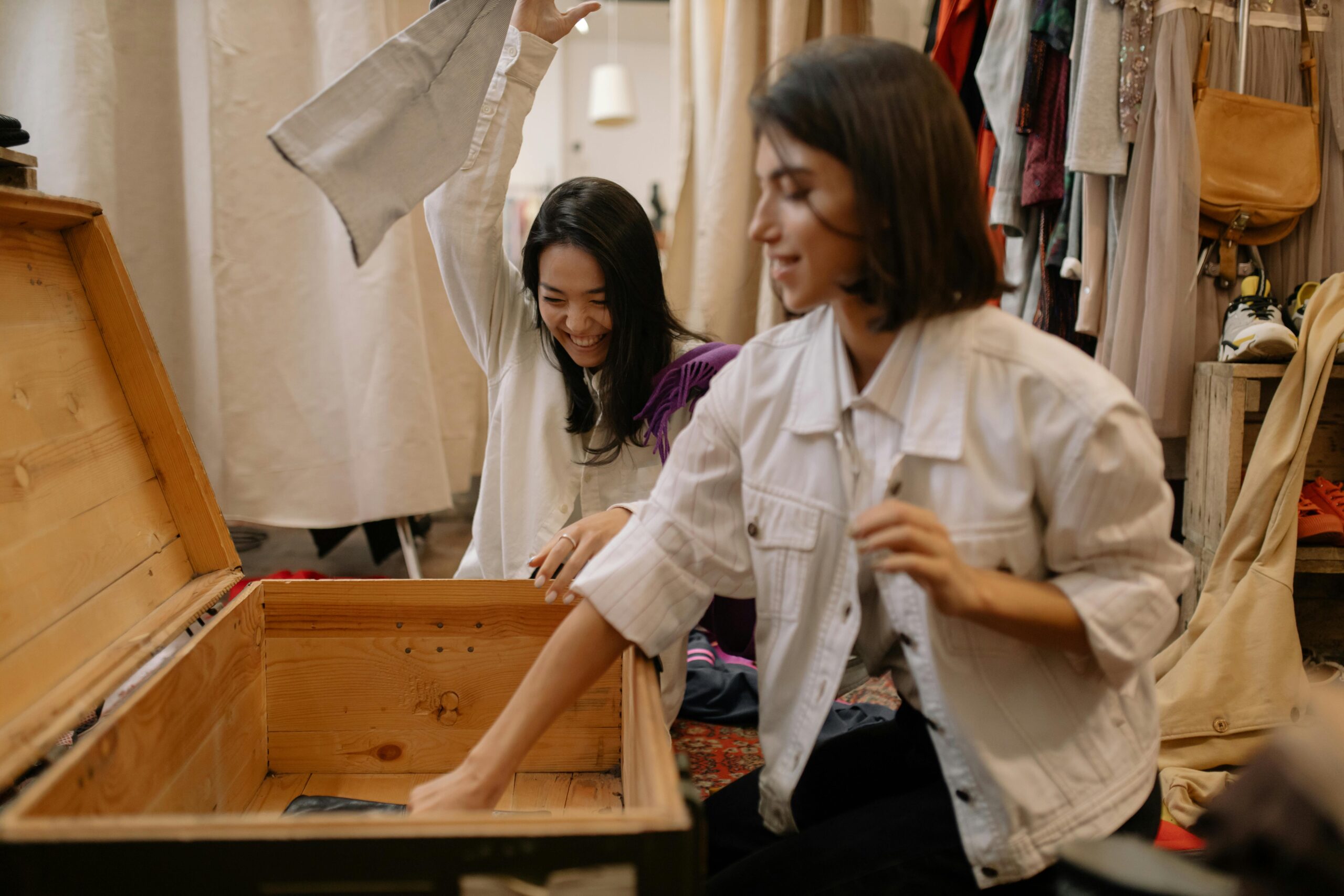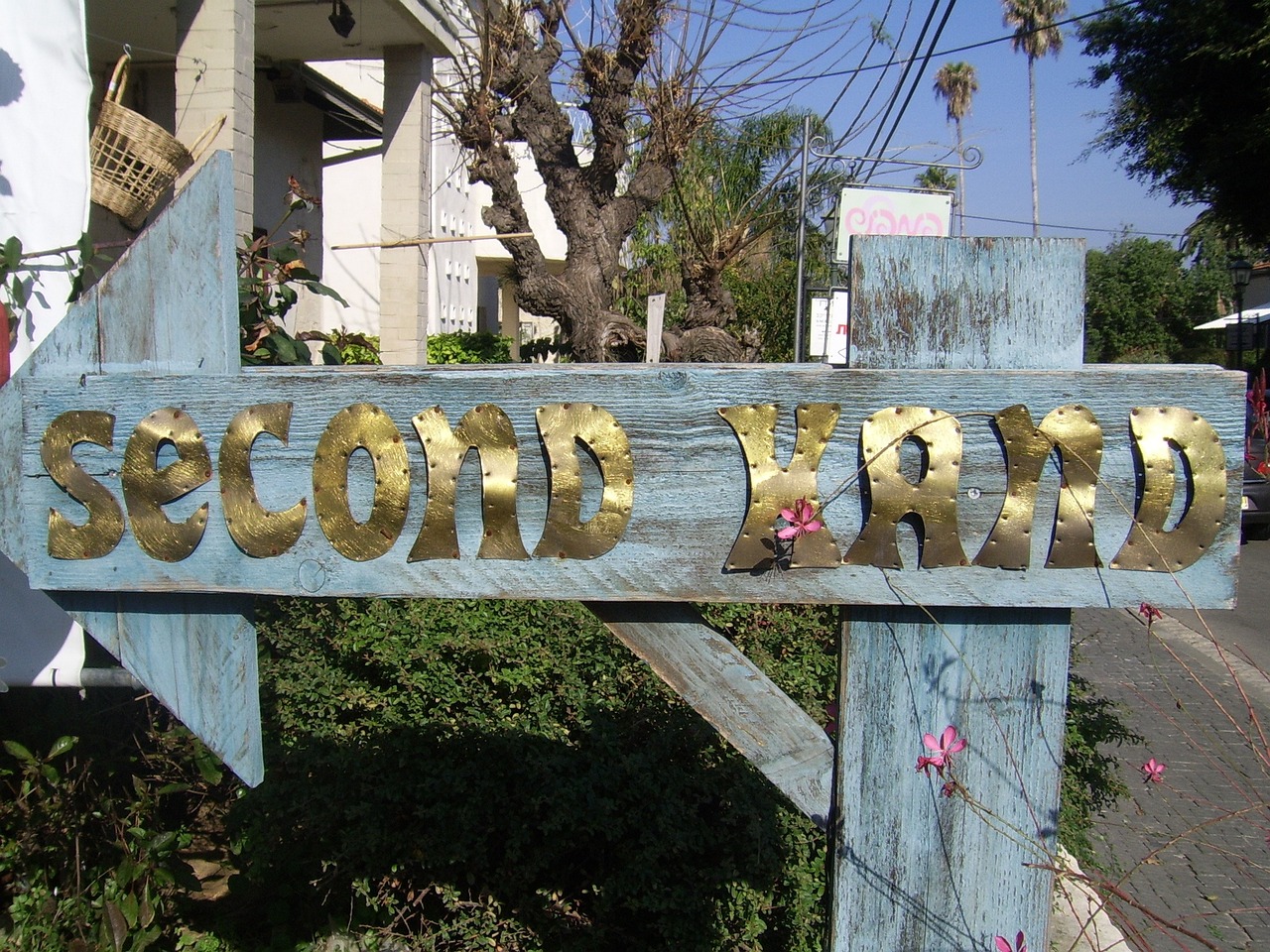Step into the eclectic world of thrift stores, where every item tells a story and sustainability meets style. Unravel the mystery of what are thrift stores as you embark on a green shopping journey, discovering treasures from the past that brighten the future.
Thrift stores are a great way to shop sustainably and live a zero-waste lifestyle. These stores offer secondhand items such as clothing, furniture, and home goods at affordable prices.
Thrift stores are also known for their charitable donations, as they often support local communities with the proceeds from their sales.
Understanding what are thrift stores begins with recognizing their role in promoting sustainable living and community support.

When you shop at a thrift store, you are not only saving money but also reducing waste. By purchasing secondhand items, you are preventing them from ending up in landfills and contributing to the growing issue of textile waste.
Additionally, thrift stores often have unique and vintage items that you may not find in traditional retail stores.
One of the benefits of thrifting is the opportunity to find designer items at a fraction of their original cost. Many thrift stores receive donations of high-end clothing and accessories, making it possible to score a designer piece for a bargain price. Keep an eye out for well-known brands and check the quality of the item before making a purchase.
Now that you’re curious about what are thrift stores, let’s delve into how they contribute to a sustainable lifestyle.
Key Takeaways
- Dive into the heart of sustainable shopping as we answer – what are thrift stores?
- Thrift stores offer secondhand items at affordable prices and support local communities with their proceeds.
- Shopping at thrift stores is a sustainable way to reduce waste and find unique items.
- Thrifting provides the opportunity to find designer items at a fraction of their original cost.
Table of Contents
Table of Contents
Understanding Thrift Stores

For those pondering ‘what are thrift stores’, they are more than just shops; they are gateways to sustainable shopping.
Thrift stores are a great way to shop sustainably while saving money. These stores sell previously owned merchandise, primarily donated by individuals and organizations.
They are known by many different names, including secondhand stores, charity shops, and consignment stores.
We will explore the history and evolution of thrift stores and the different types of thrift stores.
History and Evolution
Historically, answering ‘what are thrift stores’ meant recognizing their origins in charity and community support.
Thrift stores have been around for over a century. They were originally established by charitable organizations to sell donated goods and raise funds for their causes.
These stores became popular during the Great Depression when people were struggling financially and looking for affordable clothing and household items.
Over the years, thrift stores have evolved to become a popular shopping destination for people from all walks of life.
Today, many thrift stores are run by non-profit organizations and provide job training and employment opportunities for people in the community.
Types of Thrift Stores
Considering the question ‘what are thrift stores’, it’s important to explore the various types that exist.
There are several types of thrift stores, each with its own unique characteristics. The most common types of thrift stores are:
- Charity Shops: These thrift stores are run by non-profit organizations and the proceeds from sales are used to fund their charitable causes.
- Consignment Stores: These stores sell items on behalf of individuals who want to sell their gently used clothing and household items. The store takes a percentage of the sale price as commission.
- Secondhand Stores: These stores sell a wide range of previously owned items, including clothing, furniture, and electronics. They are often run by for-profit organizations.
The Benefits of Thrifting
The answer to ‘what are thrift stores’ lies in their benefits: saving money, supporting charities, and embracing sustainability.
Thrift stores are a great way to save money, support charities, and promote sustainability.
By shopping at thrift stores, you can take advantage of many economic advantages, environmental benefits, and charitable contributions.
Economic Advantages
One of the primary benefits of thrifting is the opportunity to save money. Thrift stores offer a wide variety of products at discounted prices, allowing you to buy more for less.
Whether you are looking for clothing, furniture, or household items, you can find great deals at thrift stores.
Additionally, thrifting allows you to purchase high-quality items that you may not be able to afford otherwise.
Environmental Impact
Shopping at thrift stores is also environmentally friendly. By purchasing secondhand items, you are reducing the amount of waste that ends up in landfills.
Additionally, thrift stores promote sustainability by recycling and repurposing items that would otherwise be discarded. Thrifting is a great way to reduce your carbon footprint and support a more sustainable lifestyle.
Supporting Charities
Thrift stores also benefit charities and non-profit organizations. Many thrift stores are operated by charities, and the proceeds from sales go towards supporting their programs and services.
Many thrift stores offer opportunities to donate your own gently used items, allowing you to support the community in a meaningful way.
What to Find in Thrift Stores
When exploring what are thrift stores, you’ll find a treasure trove of unique and affordable items.
Thrift stores are a treasure trove of unique items that can add personality and character to your home, wardrobe, and life. Here are some of the items you can find in thrift stores:
Clothing and Accessories
Thrift stores are a great place to find unique and vintage clothing and accessories. You can find everything from designer pieces to vintage gems and trendy items.
Buying second-hand clothes is a sustainable way to shop, and it’s also budget-friendly. You can find high-quality clothes for a fraction of the cost of new clothes.
Some thrift stores also have a selection of accessories like hats, scarves, and jewelry.
Furniture and Household Items
Thrift stores are a great place to find furniture and household items. You can find everything from vintage pieces to modern furniture. Buying second-hand furniture is a sustainable way to furnish your home, and it’s also budget-friendly.
You can find high-quality furniture for a fraction of the cost of new furniture. Some thrift stores also have a selection of household items like kitchenware, linens, and decor.
Books, Electronics, and Toys
Thrift stores are also a great place to find books, electronics, and toys. You can find everything from classic novels to modern bestsellers, from vintage electronics to modern gadgets, and from classic toys to modern games.
Buying second-hand items is a sustainable way to shop, and it’s also budget-friendly. You can find high-quality items for a fraction of the cost of new items.
Thrifting for Designer Items
If you’re looking for designer items without breaking the bank, thrift stores can be a great place to start. With a little bit of patience and some knowledge, you can find high-end brands and labels at a fraction of their original cost. Here are some tips for thrifting designer items:
Identifying Authentic Designer Goods
First and foremost, you need to know how to spot authentic designer goods. Many counterfeit items are sold at thrift stores, so it’s important to do your research before making a purchase.
Look for specific details such as the quality of the stitching, the materials used, and the overall craftsmanship. If you’re unsure about the authenticity of an item, don’t be afraid to ask a sales associate or do some research online.
Finding the Best Deals
When it comes to finding the best deals on designer items, timing is everything. Thrift stores often have sales or special promotions, so it’s a good idea to check in regularly.
Consider shopping at thrift stores in upscale neighborhoods, as they may have a higher volume of designer items. Don’t be afraid to negotiate the price with the sales associate, especially if the item has been sitting in the store for a while.
How to Thrift Shop Effectively

When shopping at a thrift store, it’s important to know how to thrift shop effectively so that you can get the most out of your shopping experience. Here are some tips to help you thrift shop like a pro.
Inspecting Items for Quality
When shopping at a thrift store, make sure to inspect the items you’re interested in for quality. Look for any signs of wear and tear, such as holes, stains, or missing buttons. Check the seams and hems to make sure they’re still intact. Don’t be afraid to try things on to make sure they fit properly.
If you find an item that needs a little TLC, consider whether you’re willing to put in the effort to fix it up. If you’re not, it’s probably not worth buying.
Negotiating Prices
Thrift stores often have flexible pricing, so don’t be afraid to negotiate. If you find an item that you love, but it’s a little out of your price range, ask if they can lower the price. You can also ask if they have any sales or discounts available.
If you’re buying multiple items, ask if they can give you a deal. Remember to be polite and respectful when negotiating.
Strategic Shopping Tips
To make the most out of your thrift shopping experience, you need a strategy. Make a list of the items you’re looking for before you go shopping. This will help you stay focused and avoid buying things you don’t need.
Start by checking out the sections that are most relevant to your list. If you have time, browse the rest of the store as well. Don’t be afraid to go back to the same store multiple times to see if they’ve restocked.
Finally, consider donating any items you no longer need to the thrift store. This will help keep the cycle of sustainability going.
Donating to Thrift Stores

Thrift stores are a great way to donate items you no longer need while supporting a good cause. When you donate to a thrift store, you’re not only helping the environment by keeping items out of landfills, but you’re also providing affordable options for those in need. Here are some things to keep in mind when donating to thrift stores.
What Can Be Donated
Thrift stores accept a wide range of items, including clothing, shoes, accessories, books, toys, and household goods. However, it’s important to note that not all items can be accepted. Some items that are often not accepted include broken or stained furniture, large appliances, and hazardous materials such as chemicals and batteries.
It’s always a good idea to check with your local thrift store before donating to ensure that your items are acceptable.
Benefits of Donating
Donating to thrift stores has many benefits. First and foremost, it’s a great way to give back to your community and support a good cause.
It’s a sustainable way to get rid of items you no longer need while keeping them out of landfills. Donating to thrift stores also provides affordable options for those in need, making it a win-win situation for everyone involved.
Thrift Stores and Community Impact

Thrift stores have a significant impact on the community, especially for low-income families. These stores provide affordable clothing and household items to those who cannot afford to buy new products.
Thrift stores create jobs, provide training, and support the environment.
Job Creation and Training
Thrift stores create jobs in the community by providing employment opportunities for people who may have difficulty finding work elsewhere. These jobs can range from sales associates to managers and provide valuable training and skills for those who are just entering the workforce.
Thrift stores also offer training programs that can help employees develop their skills and advance their careers.
Support for Low-Income Families
Thrift stores are an essential resource for low-income families. These stores provide affordable clothing, furniture, and household items that families may not be able to purchase new.
Thrift stores often partner with local organizations to provide additional support to families in need. For example, some thrift stores offer vouchers or discounts to families referred by local social service agencies.
Thrift stores also support the environment by reducing waste and promoting a zero-waste lifestyle. By purchasing secondhand items, you are reducing the demand for new products, which helps to conserve natural resources and reduce pollution.
Thrift stores often partner with local recycling programs to ensure that items that cannot be sold are recycled or repurposed.
Thrift Store Chains and Local Shops

When it comes to thrift stores, there are two main types: major chains and local shops. Both offer unique benefits and drawbacks, and the choice between the two will depend on your personal preferences and values.
Major Thrift Store Chains
Major thrift store chains like Goodwill, Salvation Army, and Value Village have locations all over the country, making them a convenient option for many shoppers. These stores typically have large selections of clothing, furniture, and household items, and they often offer discounts and promotions to help you save even more money.
However, some major thrift store chains have come under fire for their business practices. For example, Goodwill has been criticized for paying some of its employees with disabilities less than minimum wage. If supporting fair labor practices is important to you, you may want to research the policies of the thrift store chains in your area before you shop.
Exploring Local Thrift Shops
Local thrift shops, on the other hand, offer a more unique and personalized shopping experience. These stores are often run by small business owners or non-profit organizations, and they may specialize in certain types of items or cater to specific communities.
Shopping at local thrift shops is a great way to support your community and reduce waste. By buying second-hand items, you’re keeping them out of landfills and reducing the demand for new products. Plus, you never know what treasures you might find!
When you shop at local thrift shops, you’re also supporting small businesses and non-profit organizations in your community. This can help create jobs and support important social programs.
The Role of Social Media in Thrifting

Thrifting has always been a popular option for those who want to save money while still looking fashionable. However, in recent years, social media has played a significant role in the rise of thrifting.
With platforms like Instagram, individuals can now share their thrift hauls and fashion inspiration with others, making it easier for people to get inspired and find new ways to incorporate thrifted items into their wardrobe.
Thrift Hauls and Fashion Inspiration
Social media has impacted the thrifting industry through thrift hauls and fashion inspiration. These posts feature individuals showcasing their latest thrift store finds, often with a focus on unique or vintage pieces. By sharing these hauls, people can inspire others to try thrifting and show them how to style thrifted items in new and exciting ways.
Additionally, social media has made it easier for people to connect with others who share their love for thrifting. By following thrift bloggers and influencers, people can stay up-to-date on the latest trends and get inspiration for their next thrift store visit.
Online Thrift Shopping
Social media has also impacted the thrifting industry through online thrift shopping. With the rise of online marketplaces like Poshmark and Depop, individuals can now buy and sell thrifted items from the comfort of their own home.
This has made thrifting more accessible to people who may not have access to physical thrift stores in their area. Online thrift shopping also allows for a more sustainable approach to fashion.
Thrift Shopping as a Lifestyle

Thrift shopping is more than just a way to save money on clothes. It’s a lifestyle that embraces sustainability, community, and culture. By choosing to shop at thrift stores, you’re making a conscious effort to reduce waste and support local charities. Here are some key reasons why thrift shopping is a lifestyle choice worth making.
Building a Sustainable Wardrobe
Thrift shopping is an excellent way to build a sustainable wardrobe. By purchasing second-hand clothing, you’re reducing the demand for new clothing, which is a significant contributor to the fashion industry’s environmental impact.
The fashion industry is the second-largest polluter globally, and by choosing to thrift, you’re helping to reduce its impact on the environment. Thrift shopping also allows you to experiment with different styles and trends without contributing to the fast fashion industry’s negative impact.
Community and Culture
Thrift shopping is more than just a way to save money. It’s a way to support local charities and connect with your community. Many thrift stores are run by non-profit organizations, and the money they make goes back into supporting their programs and services.
Thrift stores also offer a unique shopping experience that encourages creativity and self-expression. You never know what you’ll find at a thrift store, and that’s part of the fun.
Frequently Asked Questions

What can you typically find at a thrift store?
Thrift stores are known for their wide variety of items, ranging from clothing and accessories to home decor and furniture. You can find gently used or even brand new items at a fraction of the cost of retail prices.
Some thrift stores even carry vintage or one-of-a-kind items that you won’t find anywhere else. It’s important to keep in mind that the selection of items can vary greatly depending on the store and location.
How do thrift stores acquire their inventory?
Thrift stores acquire their inventory through donations from individuals and organizations. Some thrift stores also work with consignors, who receive a portion of the sale price for their items. Donated items are typically sorted and inspected before being placed on the sales floor.
What are the benefits of shopping at thrift stores?
Shopping at thrift stores not only saves you money, but it also promotes sustainability by reducing waste. By purchasing secondhand items, you are giving them a new life and keeping them out of landfills. Additionally, thrift stores often support charitable causes, so your purchases can contribute to a good cause.
Are thrift stores and consignment shops the same thing?
Thrift stores and consignment shops are not the same thing. Consignment shops sell items on behalf of the owner, who receives a percentage of the sale price. Thrift stores, on the other hand, acquire their inventory through donations and sell items to support their organization or cause.
How does thrift store pricing generally compare to retail?
Thrift store pricing is typically much lower than retail prices. Items are priced based on their condition, brand, and demand. Some items may be priced higher than others, but you can still find great deals on high-quality items.
What to look out for when thrift shopping to ensure quality?
When thrift shopping, inspect items carefully before purchasing to ensure their quality. Check for any signs of wear or damage, and make sure that clothing items fit properly. It’s also a good idea to wash or clean items before using them to ensure they are sanitary. Keep in mind that some items may require minor repairs or alterations, but these can often be done at a low cost.

I’m Chris, a passionate advocate for sustainability, sharing my journey and tips from our vibrant family farm. With a background rooted in zero-waste living and a heart committed to eco-friendly practices, I aim to empower others through my blog. Each post is a blend of personal experiences or a question I have once pondered, and practical advice for those looking to make sustainable choices in their daily lives. Join me in making every step a greener one, as we explore the joys and challenges of living sustainably together.